Introduction – The Fabric of Life:
Everything on Earth, and every other planet, is made up of the same matter. The fabric of life is the particles making up all matter in the universe, including the physical forms of living beings. These particles (simplified) are protons, neutrons, and electrons, with the energy coursing through these particles being massless photons (particles of energy or light). These three (or four, including photons) particles are responsible for chemistry as we know it.
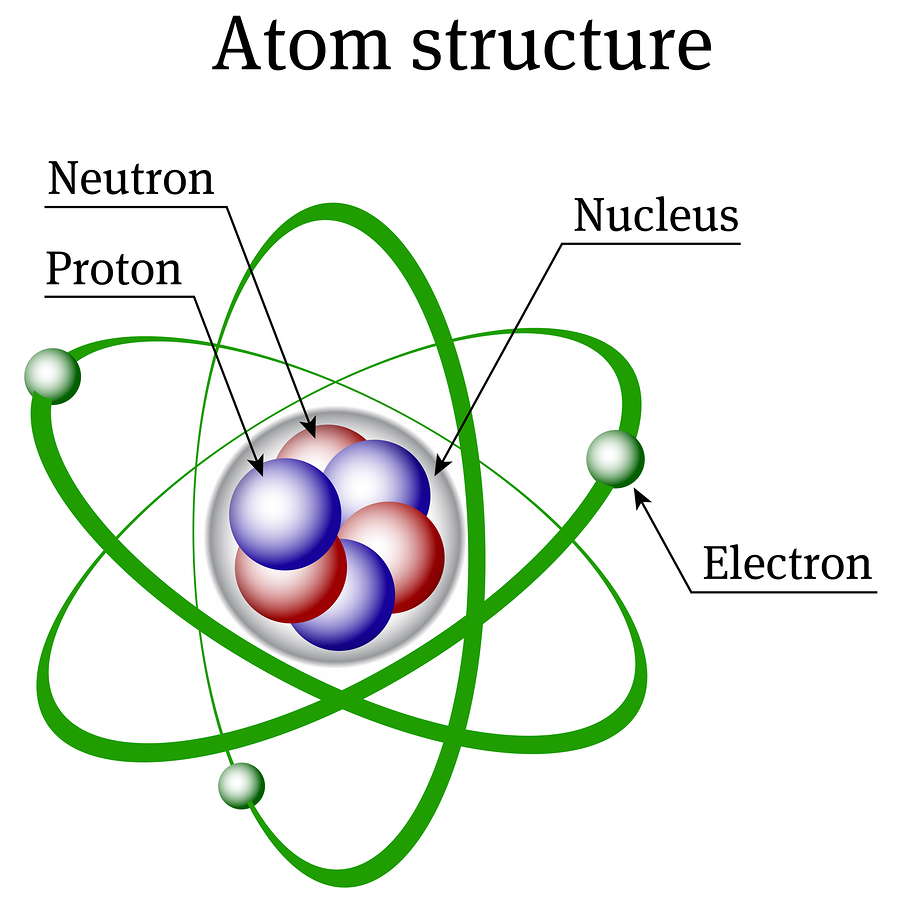
Protons and neutrons come together to form the nuclei of atoms. The very light but strongly charged electrons arrange themselves around these atomic nuclei to balance the opposite charge of the protons. Together, the atomic nuclei and electrons are called atoms, which then arrange themselves together at a higher level to form molecules. Atoms and molecules absorb and emit photons (energy), swap lightly-bound electrons, and rearrange themselves to form new molecules or crystals in chemical reactions. Even the nuclei of atoms can be split apart or fused together in nuclear reactions to form different atoms. All of these reactions are governed by the forces of nature (gravity, electromagnetic force, weak nuclear force, and strong nuclear force).
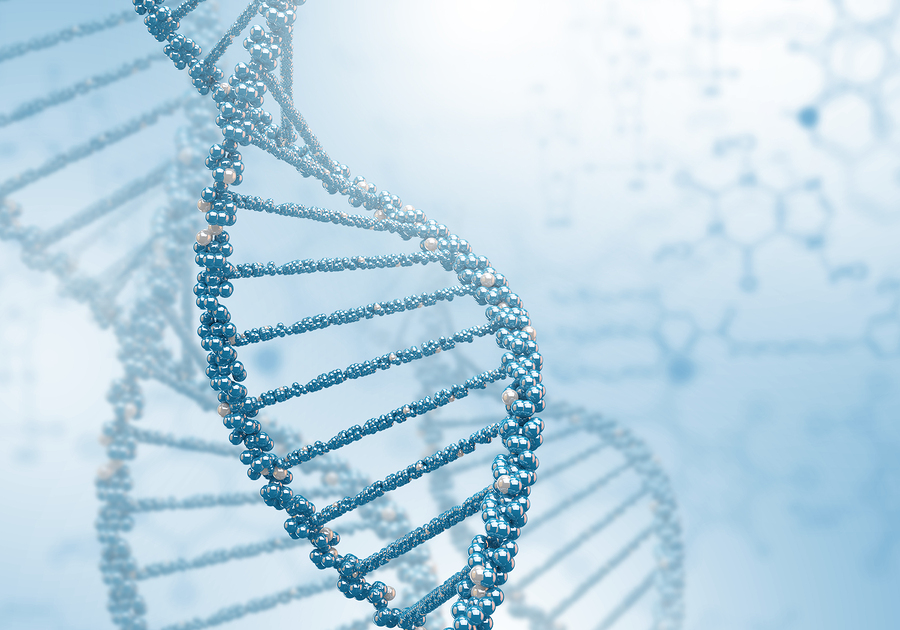
This is what human bodies and brains are made of: protons, neutrons, and electrons arranging themselves in different ways with photons mediating the transfer of energy. This extends to all inorganic matter as well. The particles in a rock are the same as the particles in your brain or any living tissue. As conscious living beings we feel as though we have control of this matter (I choose to move my hand), but if all that we are (brain and body) is just a bunch of particles interacting and following the laws of physics, are we truly alive and in control of our fates, or are we merely “watching” the universe and our experiences happen? Do we have control of the matter which makes us sentient, or does it control us? Is there an essence that gives us this control? How could we ever know?
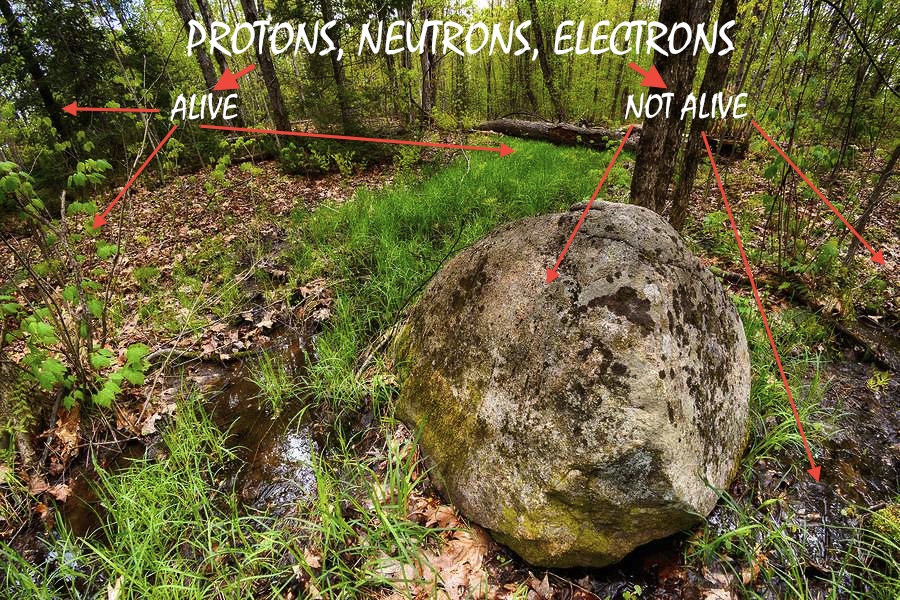
The process of particles coming together to form the molecules of life (organic molecules and biochemistry) is still very mysterious to scientists. Although organic molecules must be present in a living being, their presence is not sufficient. Petroleum (the remains of living beings from millions of years ago) is chock full of organic molecules, but it isn’t alive (according to the seven characteristics of life – using energy, growing, adapting, reproducing, etc.). It’s as if there is something within or controlling the particles inhabiting living beings that make them “come alive”, so to speak, when the arrangement of the particles allows for it. If this is true, then it’s not the particles that are alive, but something else.
Furthermore, the particles that make us up today are not even the same particles that made us up a year ago. 98% of atoms in the body are replaced every year. These particles swap out all the time, and are thus not special in any way in the creation of life. We think we’re the same person, but the physical matter we are made of is temporary and changing all the time. What we experience as reality is limited to the resolution of our senses (seeing, hearing, smelling, tasting, and feeling), which are also temporary phenomena. Even from a more mental perspective, a sharp knock to the head can permanently alter the personality of a human being and can remove memories. Our bodies, senses, memories, and even our personalities are ephemeral and, thus, are not truly “who we are”. If we are truly alive there must be something deeper and more permanent driving these particle interactions.
So what is the “force” ,”spark”, or “essence” of life (for lack of better terms) that inhabits particle interactions and creates the apparent free will of life? Is it the same for every living being? Does each living being have a separate spark?
The Essence of Life: Two Potential Models
The above questions can not really be answered with any certainty, at least not today, and probably not within our lifetimes. The nature of life is almost unfathomable. Almost. Although pondering these sorts of questions might not be immediately useful when it comes to lifestyle improvements (Sustainable Balance style), playing around with these philosophical questions can give insight into how and why we live, which can give perspective and even purpose to our being.
I’m not the first person to attempt to tackle these questions, but I have given it some focused thought and based on reading other people who have given this thought, I believe there are two potential models of the essence of life. The first model is living beings are separate from each other in essence and in body. The second model is all living beings are actually the same essence or being but experiencing the universe from different vessels. This second model describes separation between beings as only perceived separation, when ultimately we are all connected through a common essence. The image below illustrates these models:
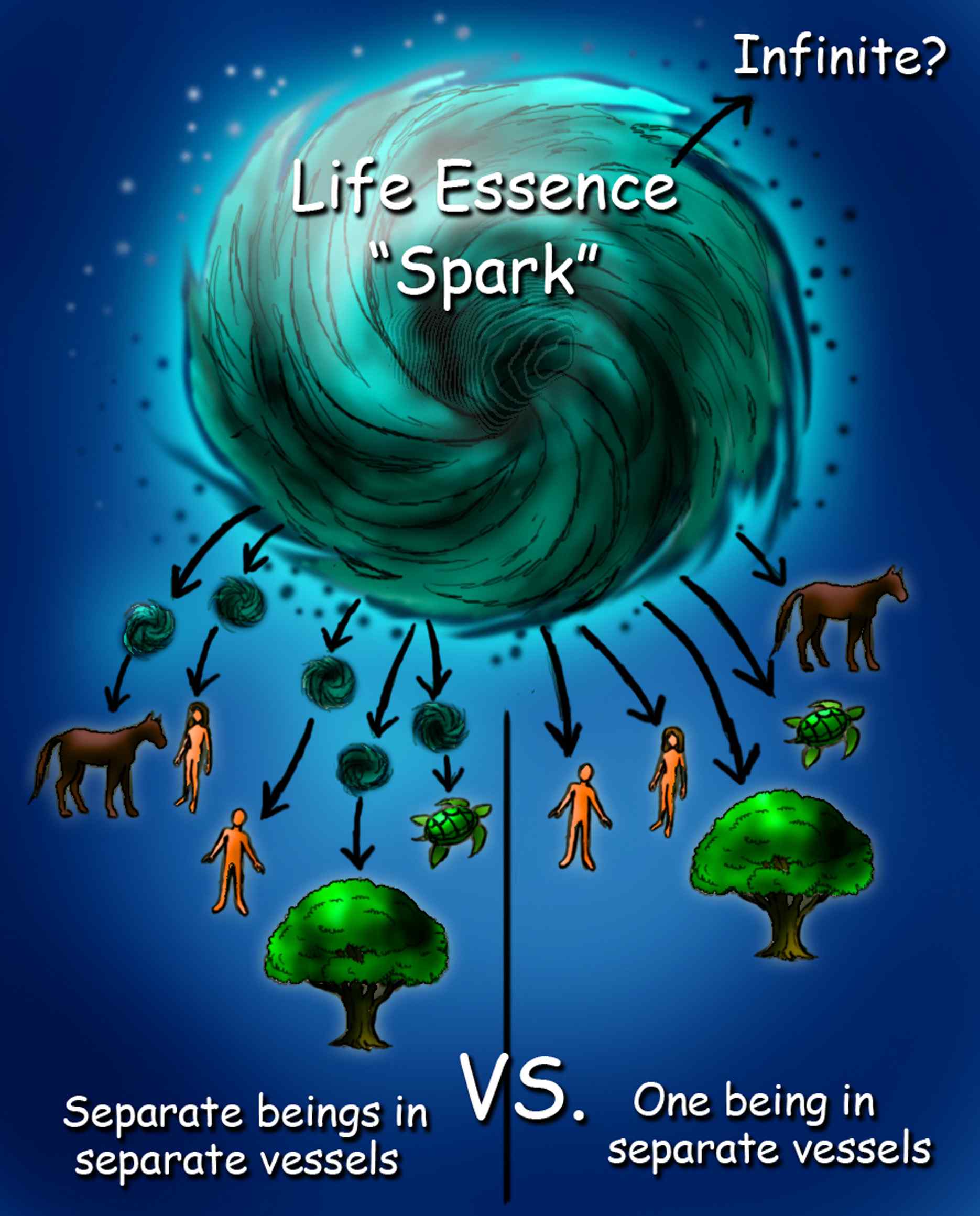
There is also the question of whether this life essence is finite in nature (only so many living beings possible), or infinite. Either way, let’s take a look at model #1:
Essence of Life Model #1: Separate Beings in Separate Vessels
In this model, the life essence is a collection or a continuum of separate beings. My soul (or spark), the ‘Graham Ballachey’ spark, is separate from yours, separate from that of a tree, and separate from that of every other living being. When my body fails, the ‘Graham Ballachey’ spark will go on to some other plane of being or inhabit some other life vessel (body or plant or something), but I will still be “me” in one way or another.
I see this model as one big life essence that churns out little sparks that go on to inhabit different vessels. This is more or less in line with what is taught in religion (as far as I know). Raised a christian, I was taught that God (a separate being) created everything, and when I die “my” soul would go to heaven (provided I accept Jesus as the messiah). While there I would be with all the other dead humans that made it into heaven, and we could all totally hang out all the time. Thinking this way definitely relieves the anxiety surounding death, but now that I am more agnostic than religious, I won’t count on it (but I concede that it could be true).
The source of sparks could be infinite, or not. How much spark is in each being? Does a spider have the same size spark as a human, or a tree? How is the essence shared? Again, these questions can not truly be answered, but it’s fun to think about. Let’s take a look at model #2:
Essence of Life Model #2: One Being in Separate Vessels
Even though model #1 and #2 are predicated on the same supposition to a degree, most people find model #2 more unfathomable, although personally I find it more likely. In this model, the essence of life is one being (infinite or not) that inhabits all living vessels. The separation that we feel as individuals, in this model, is an illusion. Our different brains, bodies and memories gives us only the perception of being separate, when in reality the spark that breathes life into our bodies is the same across the universe.
One consequence of this theory is that we (all living beings) would ultimately be the same essence viewing the world through separate temporary windows. The identities that we hold dear(our names, our stories, our experiences) would actually be part of the collective experience of the universe, and not just ours.
This reminds me of a talk by comedian Bills Hicks where, amongst other things involving LSD, he has this beautiful [adapted] quote:
All matter is merely energy condensed to a slow vibration. We are all one consciousness experiencing itself subjectively. There is no such thing as death. Life is only a dream, and we are the imagination of ourselves.
If this is true (and there is no way of knowing definitely), then the success and well-being of your fellow man and the ecosystem as a whole translates into your success and well-being. Since we are all one, what is the point of competing with one another? Instead we should seek to understand one another, and find a balance between our subjective points of view and the ongoing evolution of the essence of life. The only differences between us would be the temporary particles and thoughts that define the individual egos.
And that, in the model, could be the meaning of life: to experience the universe in a different way, which would be great because we are all already doing that at every moment! Every point of view is unique, and we would all be contributing to the experiences of the universal life essence.
Again, there is no way to confirm this, but I find Model #2 (one being or essence) much more comforting than Model #1 (separate beings). If you can recognize yourself in other forms of life, than as Bill Hicks says, there really is no such thing as death.
That’s all I’ve got on this for now. Please readers – if you have any other ideas or potential models on this matter, I would love to hear them! I am open to all perspectives and opinions, and would relish the opportunity to discuss this. Please leave a comment below if any of this resonates with you.
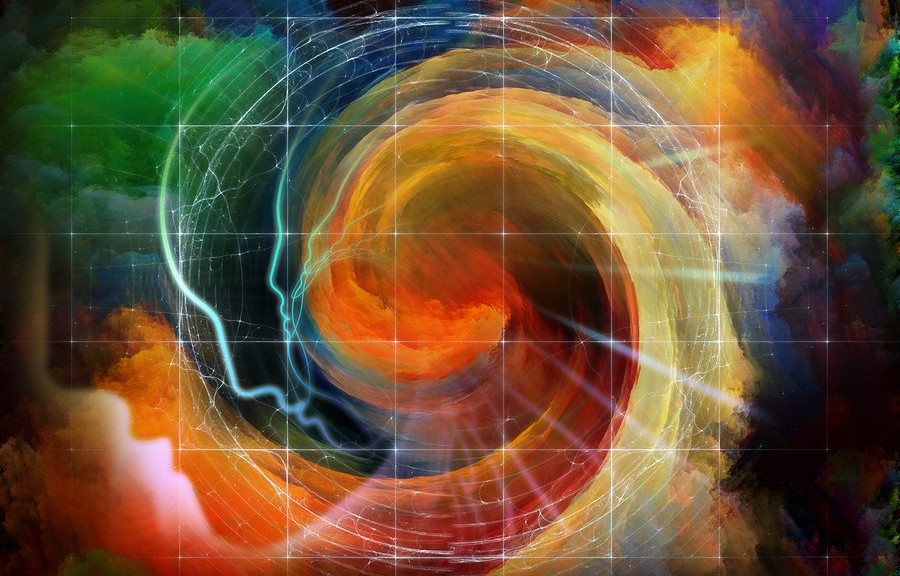
Hey Graham:
RE: “You’re right that there might not even really be a life essence, and that we are just self-aware particles interacting.”
I can’t imagine that individual sub-atomic particles are “self aware” on their own. That would be quite incredible! Rather I see awareness and sentience as emerging from the interactions of billions of particles. I see life as something which emerged from the way in which chemicals (and thus sub-atomic particles) interact with each other. It’s all based-on complex patterns of interaction. IMO.
Hah! Yeah that’s what I meant. I agree – I apologize for not being clear. The emergence of life, and eventually consciousness, is likely a result of the ARRANGEMENT of the particles, not the particles themselves (IMO). Particles swap out all the time, as I mentioned in the post. Individual particles are nothing special – it’s the complex interactions of large groups of particles arranged in a certain way, as you suggest.
That being said – what determined WHY they are arranged and interact that way? Luck of the draw? This is where I see the life essence coming in, but that is just my feeling.
Hey Graham! I really love your blog posts.
The idea of a shared consciousness and oneness has been around for thousands of years. Buddhism and Taoism are prime examples.
Such ideas regarding the nature of life are presently not testable by science. So we cannot really assess their validity. So how can we choose a perspective? My thought on this has always been that we should choose a philosophical outlook that provides the maximum benefit to society in general. Now “benefit” is difficult to assess and your choice of indicators for assessing “benefit” will clearly be biased based on your personal point of view. However, at least it is a tractable problem.
Religions like Christianity developed a set of rules to follow, with severe consequences for breaking these rules, and a perceived reward for following them. You are an individual entity and appropriate interaction towards other beings is governed by this set of rules. Of course, we have the golden rule: “do unto others as you would have them do unto you.”
Other philosophies are not so rule-based, and see all life as a single entity; oneness. As you described in your post, your interaction with “others” is in fact an interaction with yourself. With this philosophy, the golden rule is a given!
Personally, I think the philosophy of oneness is much more powerful for providing “benefit” to humanity. And extending the concept of oneness to all living things could offer immense benefit, particularly at this time where our natural ecosystem is at risk.
BTW I don’t really think there needs to be an external source of freewill imparting “life” properties to sentient beings. Could sentience not emerge naturally through the complex interaction of billions of particles?
Thanks for commenting Mike! This is great.
You’re darn right these ideas can’t be tested scientifically. There are some results in physics and the other sciences that allow for educated speculation, however.
I suppose I always felt like the Buddhist Oneness was always more of a “Body and Mind” thing as opposed to universal consciousness, but maybe I’m wrong. The Buddhist concept of reincarnation always threw me off because it seemed like my separate soul was to be reincarnated into something else in the next life, which is different from to a common life essence being expressed through every living thing ever. Again – could just be my misinterpretation.
Oneness does seem to lend itself to more of a benefit to society! Cool idea. Empathy would really spread with a philosophy like this. You’re right that there might not even really be an life essence, and that we are just self-aware particles interacting. What’s strange with that idea (I find) is that the universe would have had to perfectly arrange itself so that life is possible. All the constants in physics and the distribution of matter were just so and self-aware particle lumps came to be. With a life essence (or something “alive” outside of physical form), there is a force driving for a universe that can host life, which I’m more comfortable with. But hey, that’s my choice. Maybe I’ll feel differently a year from now.
Oneness with the ecosystem is something I think a lot about too. Seeing ourselves as separate from our natural environment is ignorant considering we were born from it. We have to get back into balance, and see the health of our planet as a reflection of our own.
Thanks again for the comment! Come back anytime.
Reading the post, I had a few thoughts.
First, that the one essence theory would explain some people’s claims that they have lived past lives.
Secondly, would Earth have its own consciousness or would it be apart of other life forms throughout the universe.
I’m interested in your thoughts on the evolution of this shared consciousness and where you see it going?
Hey Alex! Thanks for commenting. With regards to your question on “Would Earth have it’s own consciousness…”, I think that consciousness would be universal, and not local to any one world. Quantum entanglements shows us that two particles can interact instantaneously over huge distances (perhaps infinite distances), so I could see consciousness being at every point in the universe at once. Separation in space might be an illusion. But hey, that’s just what the physics suggests. It’d be tough to know for sure.
The evolution of shared consciousness…The way I see it, the more that conscious beings learn about what we are and what our place in the universe is, the more empathy we can have towards others. Over time, humans have learned to accept each other more and more (some more than others, but its progress). If we did encounter aliens, you’d think we’d eventually come to accept them as sentient and conscious beings as well, and they us. As far as where it’s going…My prediction is as good as yours Maybe we’ll realize it’s all a dream, and wake up!
Maybe we’ll realize it’s all a dream, and wake up!
Any thoughts yourself?
I love the combination of philosophy and science, when we try and figure “life” , or “it” (whatever “it” is), out, and in the exploration, realize that what we’ve been told isn’t really, truly known to be true! Science says “look, see and measure”, whereas many religions say “Believe and have faith”. Thank you, Graham, for reminding us that we really can’t know, for sure, a lot of things, which includes stories from the past about our supposed enemies, or threats. Perhaps the world isn’t such a scary place after all?
Hey Susan! Great comment. We have learned a great deal, but we (scientists) are also realizing that there are some things we will likely never really know. It’s fun to explore it though.